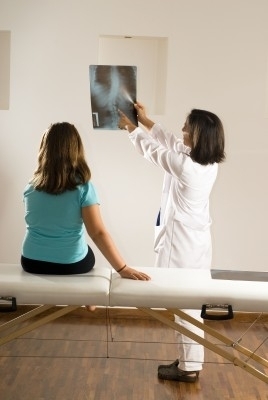by
Loren Bonner, DOTmed News Online Editor | February 05, 2013
The benefits of CT scanning outweigh the risks of radiation exposure in sick young adults, according to a study published in the journal Radiology this month.
As the public becomes more concerned about radiation-induced cancers from CT scanning, researchers from Massachusetts General Hospital wanted to try to better understand the risks and benefits of CT scanning in young adults who are sick and need CT scanning as part of their medical treatment.
"My patients come to me with genuine concern [about radiation dose] and I wanted to look at the bigger picture to see past the scan and more to the fact that they have lymphoma or were hit by a car," Dr. Susanna Lee, chief of women's imaging at MGH, told DOTmed News.



Ad Statistics
Times Displayed: 172881
Times Visited: 3132 For those who need to move fast and expand clinical capabilities -- and would love new equipment -- the uCT 550 Advance offers a new fully configured 80-slice CT in up to 2 weeks with routine maintenance and parts and Software Upgrades for Life™ included.
Lee and her colleagues started out by looking at young adult patients who were scanned most frequently. These tended to be cancer patients, and the research team quickly realized that these patients were actually dying from their cancers before any of the concerns about the effects of long-term radiation could factor in.
Models predict that as humans age, cells become less sensitive to the mutagenic effects of radiation. In other words, the rate of radiation-induced cancer is higher in children and young adults. If they survive, they are more likely to live 10-20 years, which is the time it normally takes to develop a post-radiation malignancy.
For the study, Lee and her team decided to look at imaging records of every patient between 18 and 35 years old who had a chest or abdominopelvic CT scan at one of three university-affiliated hospitals in Boston between 2003-2007. Chest CT exams were most commonly ordered for cancer and trauma; and abdominal pain, trauma and cancer for abdominopelvic CT scans.
"What was surprising is that these patients are pretty sick. If you think about it the general risk of death in that age group after the five year follow-up period is like 1 percent, these people have a 4 to 7 percent risk of dying," said Lee.
These figures — 7.1 percent for chest CT and 3.9 percent for abdominopelvic CT — were much greater than the 1 percent long-term risk of death from radiation-induced cancer predicted by statistical models in both groups.
Lee also said that it was not just cancer patients who presented the greater risk because of their bleak prognosis. Patients getting scanned for trauma and abdominal pain, for example, still had a risk of death well above the risk in the general population. When they subtracted out cancer patients from the data set, the risk of death for the other groups ranged from 2.5 to 5 percent.
Given more recent efforts to reduce radiation dose with programs like Image Wisely and Image Gently, Lee said a follow-up study using more recent data would probably make the difference in mortality even more pronounced.
"We use half the dose at our institution now than we did for this study, so the risk has gone down now. For me that's reassuring because if you look at our study, most patients are only getting one to two scans. These efforts for dose reduction are an important thing for us to be doing," said Lee.

